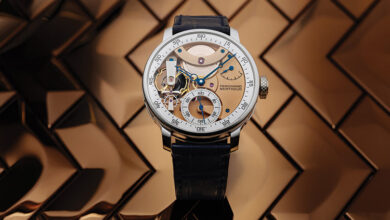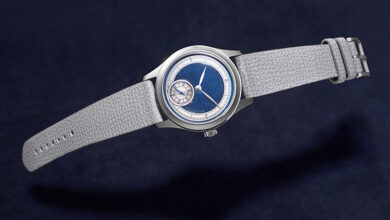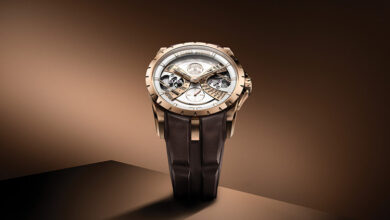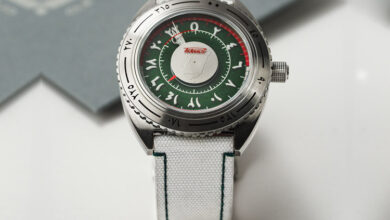F.P.Journe unveils new edition of Chronomètre à Résonance
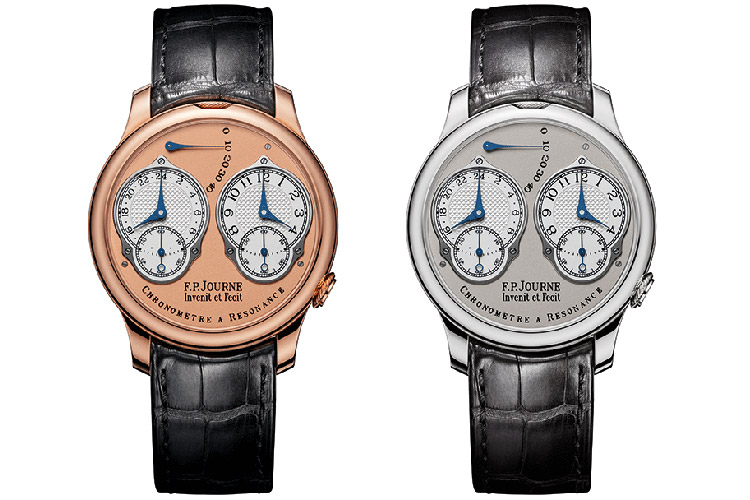
For the 20th anniversary of the Chronomètre à Résonance, F.P.Journe proposes a version with a special dial that will be produced only during the year 2019. The hour dial at 3h maintain an analog 12-hour indication while the dial at 9h features for this edition an analog 24-hour indication
The subtle 18K rose gold mechanism with its two perfectly synchronised beating mechanical hearts for an unequalled precision in a wristwatch are visible through a sapphire crystal caseback. The 2019 edition of the Chronomètre à Résonance is available in two versions: one with a platinum case and white gold dial, the other entirely in 18K 6N Gold. The two dials in silver guilloche Clous de Paris indicating the hours and minutes can also be set on two different time zones.
The Chronomètre à Résonance is imbued with a profoundly poetic depth, and remains, 18 years later, the most precise mechanical watch in contemporary watch making. The resonance phenomenon is two frequencies that harmonise. Any animate body transmits a vibration to its environment. When another body picks up this vibration, it absorbs its energy and begins to vibrate at the same frequency. The first is called the “exciter” and the second the “resonator”. This physical phenomenon known as “resonance” is an integral part of our daily life and yet we hardly even notice it.
When we are looking for a programme on the radio, it crackles until the chosen wavelengths meet those of the transmitter: only then do they harmonise to begin resonating together. Resonance concerns all fields including those related to mechanical engineering, music and human beings.
Amongst the numerous masterpieces made by Antide Janvier, we are reminded of his mastery of the physical resonance phenomenon in a regulator, a natural phenomenon that only François-Paul Journe, two centuries later, perpetuates using this difficult and delicate technique with a modern conception, that of a mechanical wristwatch that was created to provide the greatest precision.
Condensing a large double pendulum in the small space available in a wristwatch was an impossible task. François-Paul Journe doubted, and nevertheless entered this modern race to reach an extreme degree of precision in time measurement. He took up the challenge with a first creation in the form of a pocket-watch, which did not yet perform according to his expectations. It would take fifteen more years of work to gain the maturity and the experience to meet the demands of actual wear on the wrist and provide chronometric performance to present as a world premiere, the very first resonance wristwatch, pushing the limits of chronometry to its extremes.
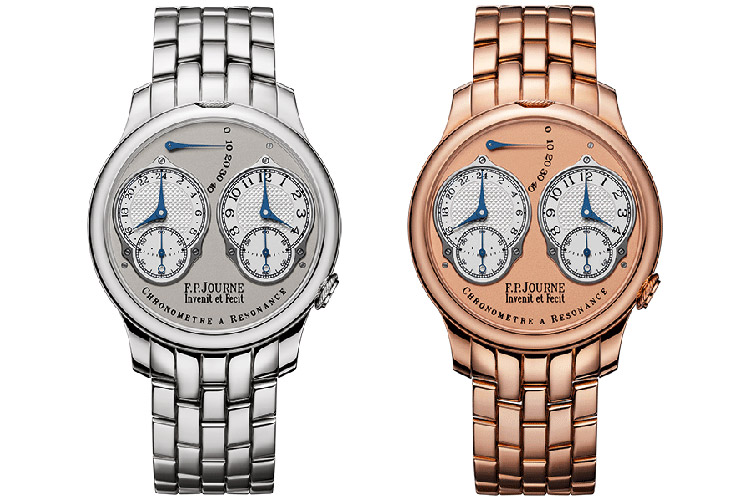
A watch is not a pendulum. François-Paul Journe calculates, checks, doubts again. He then abandons the project for a few years but he cannot stop thinking about Antide Janvier’s double pendulum. Hands, brain, calculations, sketches and prototypes all resonate in François-Paul Journe’s mind as he works non-stop at his designer’s desk. The first wrist-watch with “Resonance” (protected trademark), was commercialised as a world premiere in the year 2000.
Each of the two balances alternately serves as exciter and resonator. When the two balances are in motion, they enter into sympathy due to the effect of resonance and begin naturally beating in opposition. The two balances thus rest against each other, giving more inertia to their movement.
This result is possible only if the difference in frequency between them does not exceed five seconds per day of cumulated difference in six positions. Adjusting them is an extremely delicate task. Whereas an external disturbing movement affects the running of a traditional mechanical watch, this same disturbance, in the case of a resonance watches, produces an effect that accelerates one of the balances as much as it slows the other down. Little by little, the two balances come back towards each other to find their point of harmony, thus eliminating the disturbance. This innovative mechanism revolutionises established standards and offers an amount of precision that had never been equalled in a mechanical wristwatch.
This emblematic timepiece represents one of the wildest challenges ever in the field of the mechanical watch and significantly mark the research on precision made by François-Paul Journe. At the entrance of the F.P.Journe manufacture’s ateliers, a fascinating clock occupies the place of honour, the second of three double regulators constructed by Antide Janvier. The first is kept at the Paul Dupuis museum in Toulouse and the 3rd at the Patek Philippe museum in Geneva.

